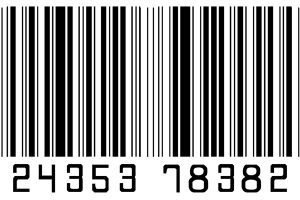Verifying Customer Identities in 2018
 2017 was a year of major data breaches. Hundreds of millions of consumers’ identifying information is now available for sale on The Dark Web.
2017 was a year of major data breaches. Hundreds of millions of consumers’ identifying information is now available for sale on The Dark Web.
Though The Dark Web sounds about as real and recognizable as Star Wars: The Physics Documentary to many, moving into 2018, e-commerce companies must acknowledge the reality and possibility of hacker-driven fraud.
Tom Donlea, Vice President of Global Marketing at Whitepages Pro – an identity verification data provider for risk management in banking and online lending – shared some predictions about e-commerce companies’ endeavors to verify customers’ identities in the coming year.
Big data and machine learning will become essential fraud-fighting weapons
According to Donlea, with the reliability of any single piece of customer data now in question, e-commerce companies will need high-quality data comprised of many different attributes.
In 2018, expect to see widespread adoption of machine learning to analyze the relationships between data elements across millions of transactions, identifying patterns that are consistent among good customers and also signals that indicate fraud. This will be essential in fast-moving markets like digital commerce and online lending.
Online businesses will bring fraud fighting in-house
Most e-commerce enterprises currently rely on rules-only “decisioning platforms” that decide whether to reject, accept or review online orders.
According to Donlea, rather than relying on third-party vendors to supply this intelligence, larger online businesses will evolve and deploy their own machine learning fraud detection systems in 2018.
“They’ll rely less on specific rules and utilize models that suit their unique vertical and continuously learn as their business evolves,” he wrote.
Cross border e-commerce will grow (and so will the risk of fraud)
The United States may be the world’s second largest e-commerce market, but it’s nearly doubled by China’s market. Combined, the size of the remaining top 10 e-commerce markets is also larger than the U.S. In other words there is a lot going on, globally.
Many e-commerce companies will see a opportunity for expansion into global markets. With that opportunity, however, comes a higher risk of fraud. According to Donlea, by some estimates, the risk of e-commerce fraud is 1.5 times greater outside the U.S., where standard identity verification techniques are often complicated by poor or inconsistent data. Strategies for mitigating fraud within varied marketplaces and across nation-state borders must be taken into close consideration.
Blockchain for identity, at least for some transactions
Originally developed as a way to enable secure transactions between buyers and sellers of cryptocurrencies like Bitcoin without requiring a centralized financial institution to act as a go-between, blockchain is increasingly seen as a possible future for identity verification. According to Donlea, it might even be used to create the elusive, un-hackable digital identity verification system we’ve all been hoping for.
“Blockchain may not become mainstream in 2018, but it very well could move from prototype to a functioning (if limited in reach) identity system for high-value financial transactions and health-related data,” he wrote.
No matter what, hacks and breaches won’t slow down. There will always be entities and individuals who would rather steal shit and mess with people than do their own thing, whatever their anti-capitalist “rationales” may espouse. The stigma of porn adds another level to the potentially disastrous shenanigans that can ensue.
The companies that excel at identity verification and can reduce the rate at which they deny or delay transactions from good customers, while actually blocking those they should, will standout in consumer retention and – ultimately – loyalty.
Image via Jo McCulloch













